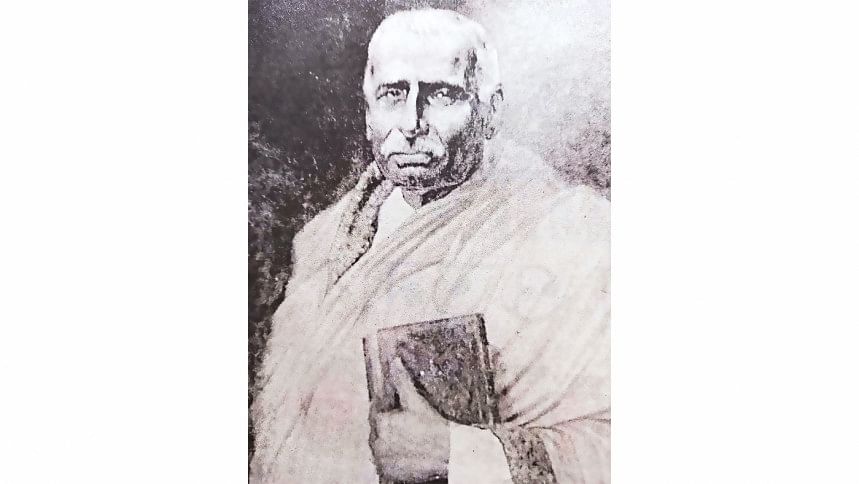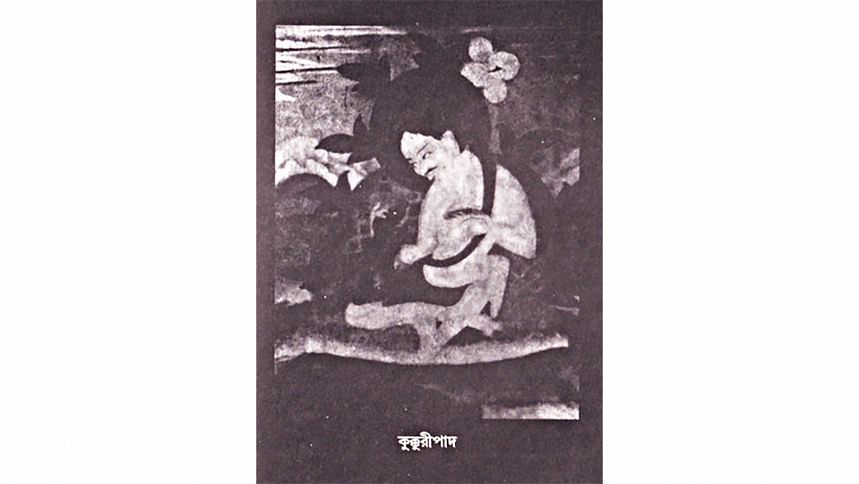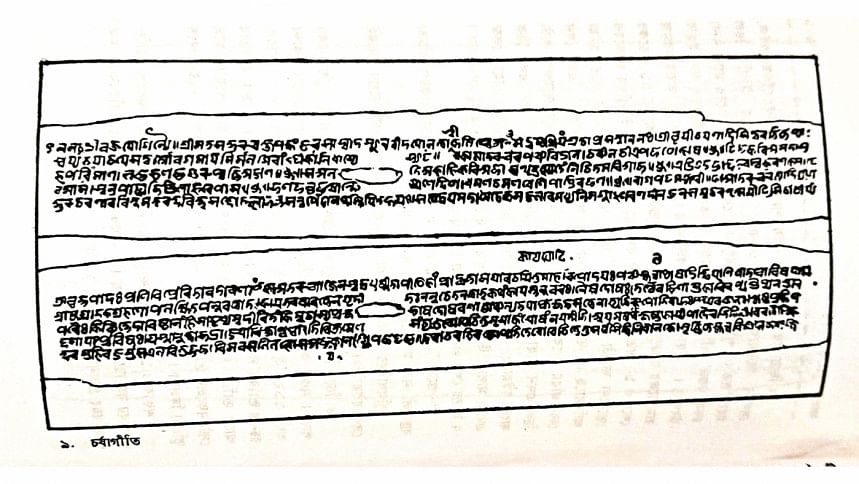An Unusual Pundit: 170th Birth Anniversary of Haraprasad Shastri

Haraprasad Shastri (1853-1931, Bhattacharya was the original family name) was a Sanskrit scholar, commonly referred to as a 'pundit.' His unique qualities as a pundit will, hopefully, become evident as you read this article. Born in the Kumira village of Khulna in 1853 but raised in Naihati, a town now situated in North 24 Parganas, West Bengal, he inevitably inherited the title of Shastri due to his family's longstanding tradition of Sanskrit scholarship. His ancestors had played a crucial role in providing scholarly advice to prominent figures such as British rulers Warren Hastings and William Jones. Additionally, they assisted the native potentate Krishnachandra Ray of Nadia in achieving social advancement.

Haraprasad Shastri's father was Ramkamal Nyayaratna, and his mother was Chandramani; they had seven children. The penultimate child, Sarat, earned his name after reportedly recovering from a life-threatening illness through the grace (Prasada) of Lord Siva (Hara). Consequently, he carried the name by which he is now known.
After completing his education at a local school in Naihati, Haraprasad Shastri pursued higher studies at Sanskrit College, Calcutta, where he earned the prestigious 'Shastri' title for achieving the highest credits in his post-graduate examination. In addition to attending classes at Presidency College, he explored the realms of mythology and history of ancient India through the lens of Sanskrit. Haraprasad became a disciple of the renowned Indologist, Rajendra Lal Mitra (1822-1891), contributing to research under his guidance. He also enjoyed the affection and mentorship of two prominent figures of the Bengal Renaissance, Ishwar Chandra Vidyasagar (1820-1891) and Bankim Chandra Chatterjee (1838-1894).

During his time at Presidency College, Haraprasad Shastri was significantly influenced by Syamacharan Ganguli (1838-1928?), a clear-thinking yet low-profiled Bengali scholar of English. It is likely that Ganguli imparted a considerable amount of practical wisdom to his self-elected disciple.
Haraprasad began as a translation teacher at Hare School in 1878 but soon moved to Sanskrit College in 1883, where he served as a teacher and, for a brief period, doubled as the Head of the Department of Sanskrit at Presidency College. He eventually assumed the role of Principal at Sanskrit College in 1900, a position he held until 1908.

During that time, he engaged in various activities beyond academics. He also ventured beyond academics, once becoming the Chairman of Naihati Municipality. However, let's focus on his academic pursuits here.
He also became the Librarian of the Bengal Library and was attached to the Bureau of Information, Government of Bengal for some time. He was nominated a lifelong Fellow of the University of Calcutta and, importantly, became the Secretary of the Manuscript section at the Asiatic Society after the death of Rajendralal Mitra.
In that capacity, he traveled far and wide to collect various items, such as songs from Rajasthan bards and Sanskrit manuscripts from different places. He made four trips to Nepal in 1897, 1898, 1907, and 1922. Of these, that of 1907 was historical, as it was during that trip that he collected the manuscripts of Charyacharyabinischaya, Dohakosh, and Dakarnava from the Durbar Library of the Nepalese Prime Minister. The first, published as a part of "Hajar Bachharer Purano Bangala Bhashay Bouddhagan O Doha" from Bangiya Sahitya Parisad in 1916, carried some of the earliest literary and linguistic specimens of New Indo-Aryan languages of South Asia and arguably those of Bengali. And with the publication of that, the history of Bengali literature could be pushed five more centuries back.

It is as the discoverer of the Charyapadas that the major part of the fame of Shastri rests, although he had no mean achievement in other fields, which we will now explore to do justice to this amazing person.
First, let us digress to a somewhat unsavory anecdote of academic politics of the time. It appears that Asutosh Mukherjee, twice Vice Chancellor of the University of Calcutta, developed some dislike for Shastri and did not make any move to accommodate him at the University of Calcutta, where postgraduate studies in modern Indian languages were initiated by him in 1919. Dinesh Chandra Sen was the Vice Chancellor's favorite. So, Haraprasad was shunted to the newly founded (1921) University of Dacca as the Head of the Department of Sanskrit and Bengali, where he worked with credit and respect. In all probability, Dinesh Chandra Sen also shared Sir Asutosh's dislike for Sastri because although he lived till 1939, he refused to include the Charyapadas in his history of Bangla literature in any of its later editions. Haraprasad, however, had enough good humor to gloss over these matters.

As we said, Haraprasad was an Indologist, folklorist, linguist, and grammarian, a poet (his Balmikir Jay is said to have inspired Tagore to compose Balmiki Pratibha), an essayist, a novelist, and whatnot. His novel Bener Meye ('The Daughter of the Merchant,' 1919) engrossingly recreates the life of Bengalis when they did not shrink away from maritime trade using big, manually handled wooden boats. His numerous essays, both academic and personal, were written in limpid and lucid Bengali, which seemed quite close to standard speech, except for the older shapes of verbs and pronouns. He was not averse to using commonplace and household Bangla words in his highly readable Sadhu Bhasha. And a touch of humor made them even more attractive. He himself was a great supporter of lucid language, in which the influence of his mentor Syamacharan Ganguli is evident. That primarily distinguishes him from the run-of-the-mill pundit.

He wrote quite often for Bangadarshan, the famous periodical edited by Bankim Chandra Chatterjee. He also wrote lighthearted essays, sometimes in a satirical vein, whose targets were many, including Rabindranath Tagore. However, he was large-hearted enough to appreciate new ideas, as he organized a felicitation of Suniti Kumar Chatterji on the publication of the latter's magnum opus The Origin and Development of the Bengali Language (1926).
We are not going to cover everything that Haraprasad did or excelled in. Instead, we would like to emphasize two or three aspects that distinguished him as a scholar and man, making him almost unique among his co-practitioners.
Haraprasad did not have even a speck of communal feeling in his outlook. As we all know, nineteenth-century Bangla literature and drama had, unconsciously in all probability, fanned a kind of communal feeling by depicting, anachronistically too, Muslim rulers as destroyers of India's freedom. Strangely, these narratives were used as patriotic ones against India's contemporary dominators, the British imperialists. He was against this particularization of the nationalistic theme.
Haraprasad acknowledged that the culture of Bengal was enriched by the contributions of both Hindus and Muslims, as was its literature. He said they belonged to the same nation.
Haraprasad acknowledged that the culture of Bengal was enriched by the contributions of both Hindus and Muslims, as was its literature. He said they belonged to the same nation.
He begins his deliberations on 'Musalmani Bangla' in the course of introducing the manuscript of 'Shujjuujal Bibir Kechchha' with these words: "Bengal is a country of both Hindus and Muslims. The number of Muslims was almost half that of the Hindus...Unfortunately, however, the Hindus do not know much about the Muslims. But the love that the Hindus have for Bengal and Bengalis, and that of Muslims for them, is no less in comparison. Quite a few Muslim writers have written many excellent books in Bengali." He adds that Bishad Sindhu of Mir Musharraf Hossain is a 'great jewel' (maha ratna).
So it is quite expected that his views about the borrowed Arabic and Persian words in Bangla will also be different from those of the regular pundits. For the latter, the history of the Bangla language was very simple, just one step away from Sanskrit, as they claimed that Sanskrit was the 'mother' (janani) of Bangla. Haraprasad, on the other hand, held that Sanskrit was the 'Great-great-great-great-great-great-great-great-grandmother (ati-ati-ati-ati-ati-ati-atibriddha pramatamahi)', hence there has been a lot of change and a specious scope of receiving influences, grammatical and lexical, from other sources.
Let us, therefore, see what his stand was on Arabic and Persian borrowings in Bangla. The usual practice of ordinary Sanskrit (and Hindu) scholars was to replace these 'guilty' words with Sanskritized vocabulary. To give a few, to us funny, examples: kalam was substituted by lekhani, doyat by masyadhar, patta by bhogabidhyak patra, adalat by bicharalay, etc. Haraprasad, like his teacher Syamacharan Ganguli, was quite against it and said that the efforts of Sanskrit scholars to sweep away these two or three hundred-year-old borrowings, which have now become fully nativized as Bangla, will never be successful. And, as we said above, both Haraprasad and Ganguli were not in favor of "the displacement of familiar, Sanskrit-derived Bengali words by their Sanskrit words" and ruled that "can be justified on no reasonable ground," as the latter observed.
Haraprasad made four trips to Nepal in 1897, 1898, 1907, and 1922. Of these, that of 1907 was historical, as it was during that trip that he collected the manuscripts of Charyacharyabinischaya, Dohakosh, and Dakarnava from the Durbar Library of the Nepalese Prime Minister.
The last point we want to make about Haraprasad's originality is his views about a grammar of what was then called 'the real' (khanti) Bangla. In a seminar on this topic held at Bangiya Sahitya Parishad in 1901, he read an article 'Bangla Byakaran,' which clearly attacks the problem of writing Bangla school grammars. He observes that so far Bangla school grammars have been written following two 'patents'—one that of the Mugdhabodh Vyakarana, a popular version of Paninian grammar initiated by Vopodeva, along with that of Hiley's (an English school grammarian Richard Hiley, popular in the nineteenth century) English Grammar And Style. No grammar, as dictated by the native structure of Bangla that was commonly spoken, was, till then, developed. And his observations jibed with many others' in the Seminar, including those of Ramendrasundar Trivedi, Rabindranath Tagore, etc. He also was aware that school grammars are written to teach the language of writing, the written standard, or Sadhu Bhasha, while the living, spoken language deserved a fresh grammar of its own. It goes without saying that his views were vehemently opposed by other Shastris and Vidyabhushans present in the Seminar.
This man, in spite of being a reputed Shastri himself, was, in many significant ways, moved in far different directions from the same title-holders.
Pabitra Sarkar in an author and former Vice Chancellor of Rabindra Bharati University, Kolkata.

 For all latest news, follow The Daily Star's Google News channel.
For all latest news, follow The Daily Star's Google News channel. 



Comments